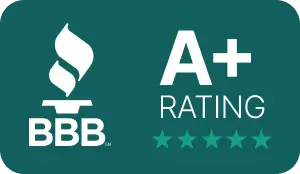For heirs facing the lengthy probate process, an inheritance advance can be a welcome solution. It provides immediate access to funds that would otherwise be tied up for months or even years. Yet like any financial arrangement, advances come with costs. These costs are not structured like traditional loans, but they are influenced by several factors tied to the estate, the probate timeline, and the type of assets involved. Understanding how these elements shape fees and payouts helps beneficiaries make more informed decisions.
Why Advances Differ from Loans
The first step in understanding the cost of an advance is recognizing how different it is from a conventional loan. Traditional financing involves interest, monthly payments, and personal liability. By contrast, inheritance funding is repaid only when the estate distributes assets, and heirs are not burdened with ongoing debt obligations.
This distinction explains why fees may look different. Since there are no interest charges or late penalties, the cost of an advance is tied instead to risk, timing, and estate complexity. Many heirs choose advances because the trade-off is preferable to taking on debt. In fact, the comparison between a funding arrangement and a standard loan underscores why an inheritance or probate advance can be a better choice for beneficiaries waiting on probate to conclude.
The Role of Probate Complexity
One of the most significant factors that shapes cost is the complexity of the probate process itself. When an estate is large, includes multiple heirs, or faces potential disputes, the timeline for distribution often stretches considerably. This extended timeframe increases the risk for the funding company, which in turn can influence the fees charged for the advance.
In simpler cases—such as when smaller estates qualify for streamlined court procedures—the overall timeline is shorter. This reduced timeframe can lessen costs because repayment is more predictable. Beneficiaries who understand how the simplified probate procedure affects the speed of inheritance distribution are better positioned to anticipate how fees may be structured.
Legal Timelines and Common Challenges
Even when probate seems straightforward, legal hurdles often arise that extend the process. Creditor claims, contested wills, and overloaded court calendars are just a few of the factors that delay distribution. For heirs, these delays directly impact the cost of accessing their inheritance early.
Funding companies must consider how long they are likely to wait before being repaid, and longer timelines usually mean higher fees. By learning about the laws, timelines, and common challenges in inheritance cases, heirs can better appreciate why certain estates lead to higher costs while others are more straightforward.
Eligibility and Heir Qualifications
The heir’s status also plays a role in determining payouts. Only rightful beneficiaries are eligible for advances, which means the funding company first confirms the heir’s legal entitlement. Beyond that, the size of the expected share, the number of heirs involved, and whether the estate is solvent all influence the amount an heir may qualify for.
The structure of the estate rather than the personal finances of the heir drives these decisions. Even heirs with poor credit can qualify, but the estate itself must support the advance. Understanding who qualifies for an inheritance advance clarifies why fees vary: risk is measured by the estate’s conditions rather than the heir’s creditworthiness.
The Influence of Asset Types
Not all assets within an estate carry the same level of predictability or liquidity. Cash accounts and bank funds are more straightforward, while real estate, business interests, or complex investments take longer to value and distribute. These differences affect both timing and risk, which in turn shape the cost of an advance.
For example, when real estate is the primary asset, the estate may need to wait for appraisals, sales, or even market fluctuations before distribution occurs. This uncertainty increases the risk borne by the funding company. On the other hand, estates made up largely of liquid accounts often lead to faster repayment and lower associated costs. Beneficiaries navigating these dynamics should consider how the types of assets in an estate can affect both fees and available payouts.
Balancing Costs with Benefits
The real cost of an advance should always be considered alongside the benefits it provides. For many heirs, access to funds now is more valuable than waiting months or years for probate to conclude. Whether it’s paying medical bills, covering tuition, or managing daily living expenses, immediate liquidity can outweigh the fees associated with funding.
Unlike loans, there is no debt obligation hanging over the heir, no credit reporting, and no risk of default. The funding company is repaid directly from the estate. For beneficiaries, this trade-off often makes sense—particularly when financial stability during probate is a priority. Choosing a probate advance is ultimately about weighing the immediate benefits against the eventual cost.
Conclusion: What Heirs Should Expect
The cost of an inheritance advance is shaped by several key factors: the complexity of probate, the length of legal timelines, the heir’s eligibility, and the types of assets involved. While fees vary, they reflect the risk and time associated with each unique estate.
For heirs considering this option, the most important step is understanding the estate itself and how its structure will affect funding. By recognizing how probate rules, asset types, and timelines influence fees, beneficiaries can approach advances with clearer expectations. For many, the ability to access a portion of their inheritance now provides financial relief that outweighs the eventual cost once the estate is distributed.








